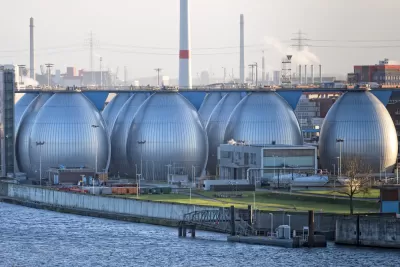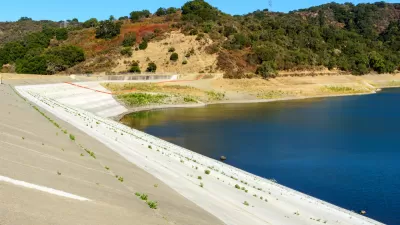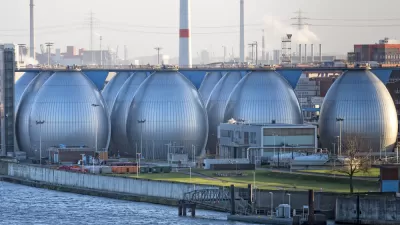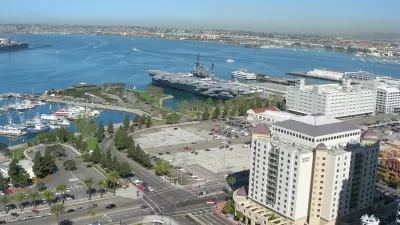Desalination is often suggested as a potential panacea for California's ongoing struggles with drought. The catch in the announcement of $34.4 million in state funding for desalination projects shows why desalination is not there yet.

"As part of efforts to boost California’s water supply in the wake of its historic, five-year drought, state water officials have decided to award $34.4 million in grants to eight proposed desalination projects across the state," reports Paul Rogers.
An important characteristic of the vast majority of these projects: the facilities are for "brackish desalination, i.e., the "process in which salty water from a river, bay or underground aquifer is filtered for drinking, rather than taking ocean water, which is often up to three times saltier and more expensive to purify."
The article also details the current capabilities of desalination facilities in California, where five active ocean desalination plants produce less than one percent of the state's drinking water. "About a dozen other ocean desalination projects are still pending, or in various states of environmental studies, design or funding," according to Rogers.
FULL STORY: California water: Desalination projects move forward with new state funding

Planetizen Federal Action Tracker
A weekly monitor of how Trump’s orders and actions are impacting planners and planning in America.

Restaurant Patios Were a Pandemic Win — Why Were They so Hard to Keep?
Social distancing requirements and changes in travel patterns prompted cities to pilot new uses for street and sidewalk space. Then it got complicated.

Maui's Vacation Rental Debate Turns Ugly
Verbal attacks, misinformation campaigns and fistfights plague a high-stakes debate to convert thousands of vacation rentals into long-term housing.

In California Battle of Housing vs. Environment, Housing Just Won
A new state law significantly limits the power of CEQA, an environmental review law that served as a powerful tool for blocking new development.

Boulder Eliminates Parking Minimums Citywide
Officials estimate the cost of building a single underground parking space at up to $100,000.

Orange County, Florida Adopts Largest US “Sprawl Repair” Code
The ‘Orange Code’ seeks to rectify decades of sprawl-inducing, car-oriented development.
Urban Design for Planners 1: Software Tools
This six-course series explores essential urban design concepts using open source software and equips planners with the tools they need to participate fully in the urban design process.
Planning for Universal Design
Learn the tools for implementing Universal Design in planning regulations.
Heyer Gruel & Associates PA
JM Goldson LLC
Custer County Colorado
City of Camden Redevelopment Agency
City of Astoria
Transportation Research & Education Center (TREC) at Portland State University
Jefferson Parish Government
Camden Redevelopment Agency
City of Claremont





























